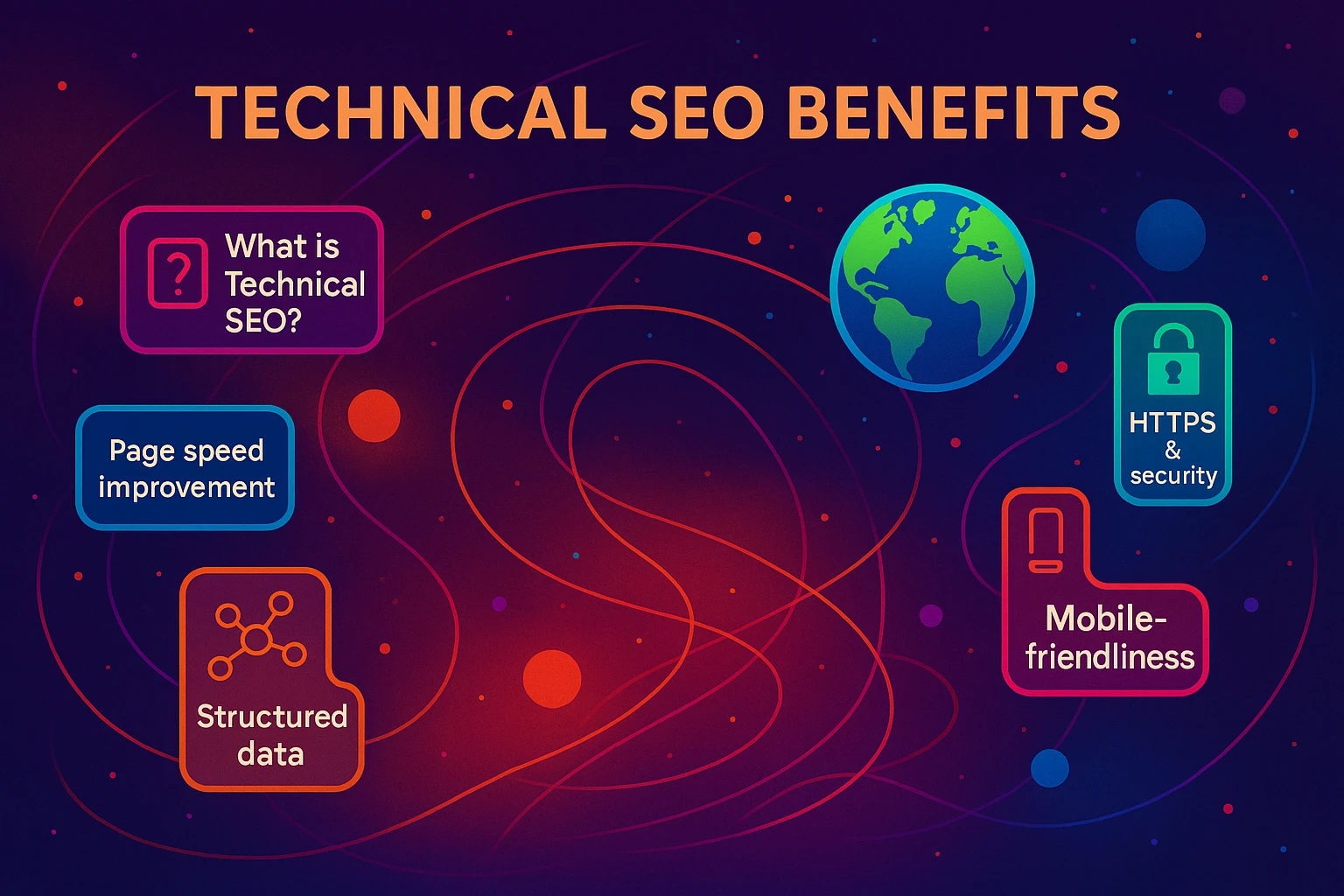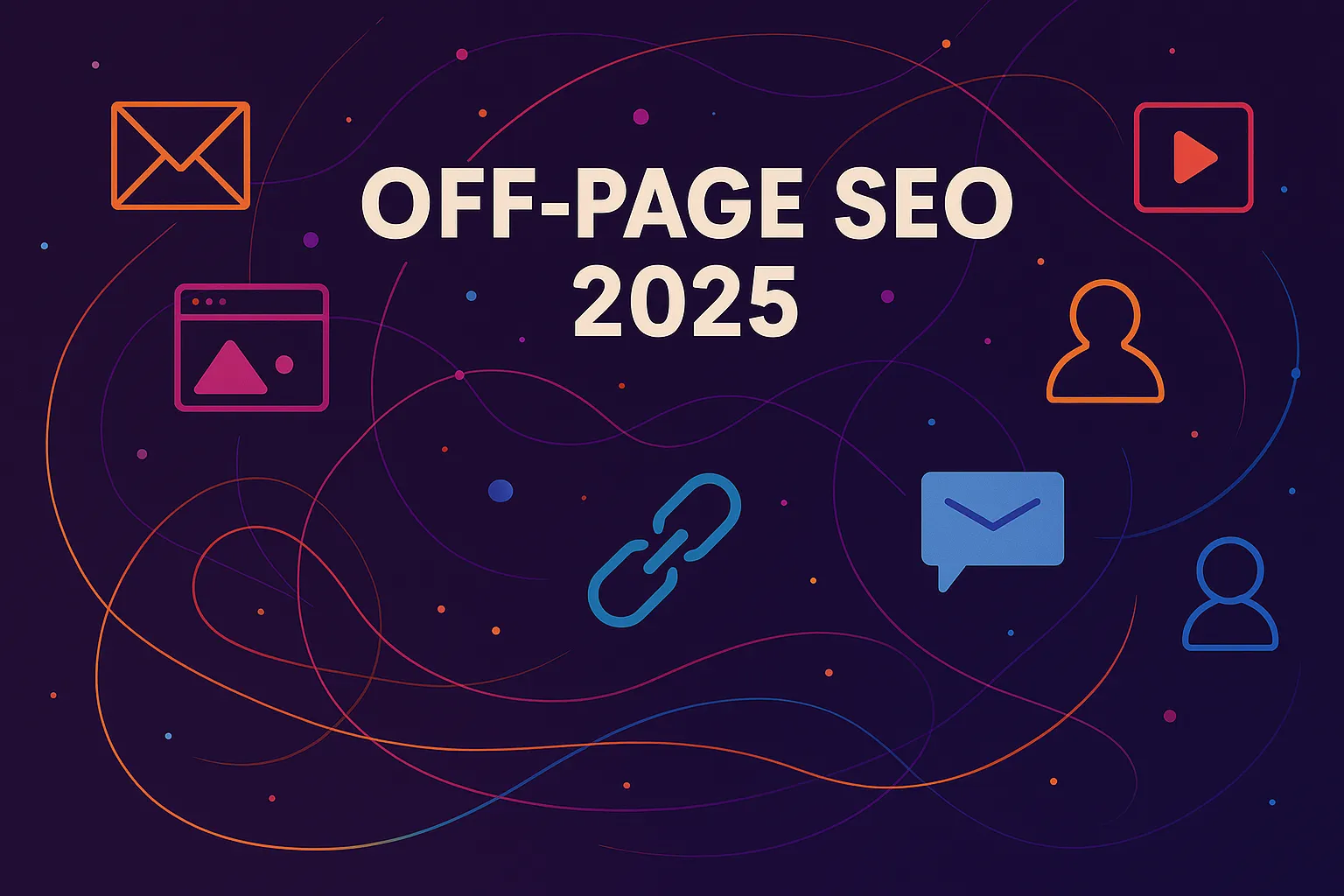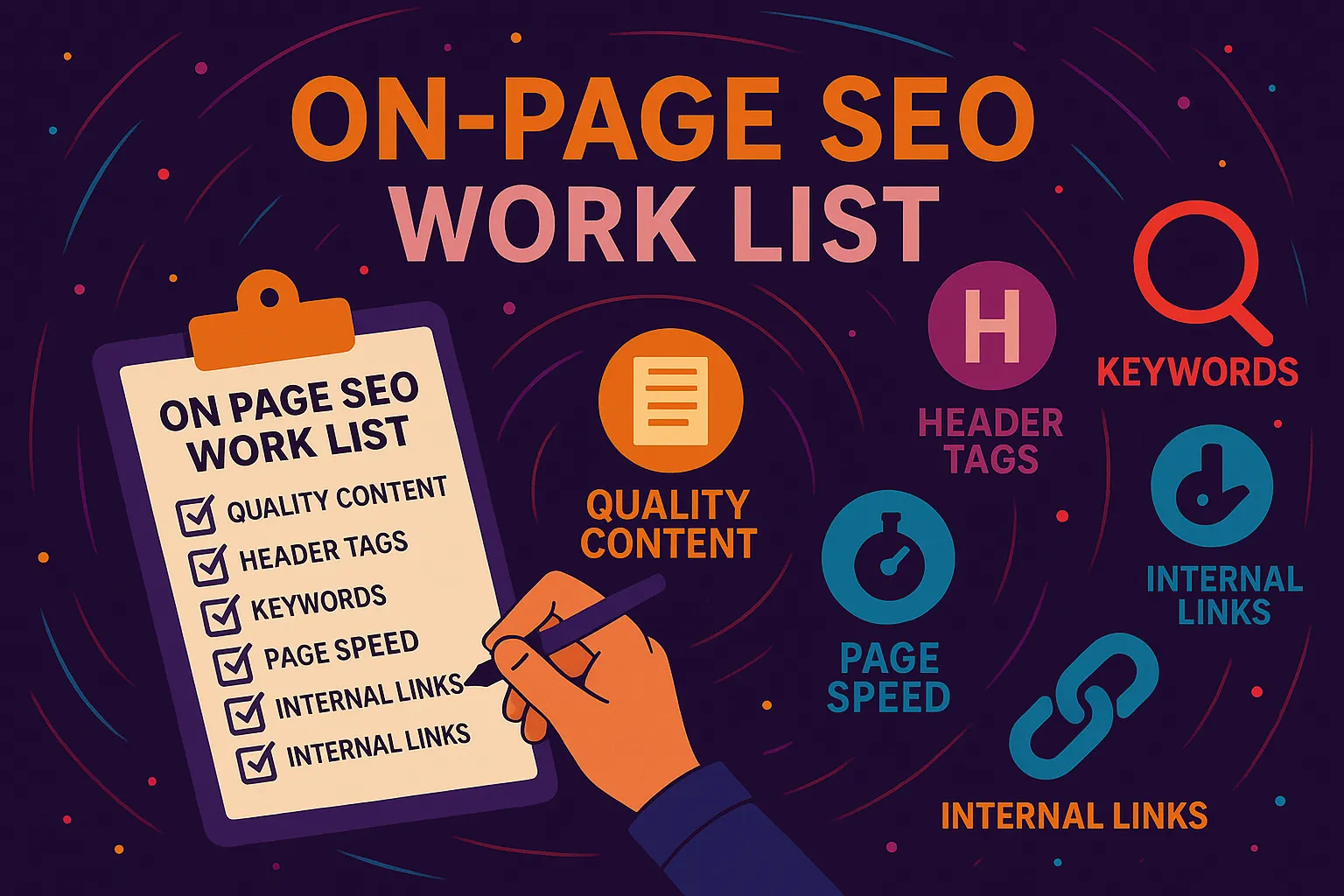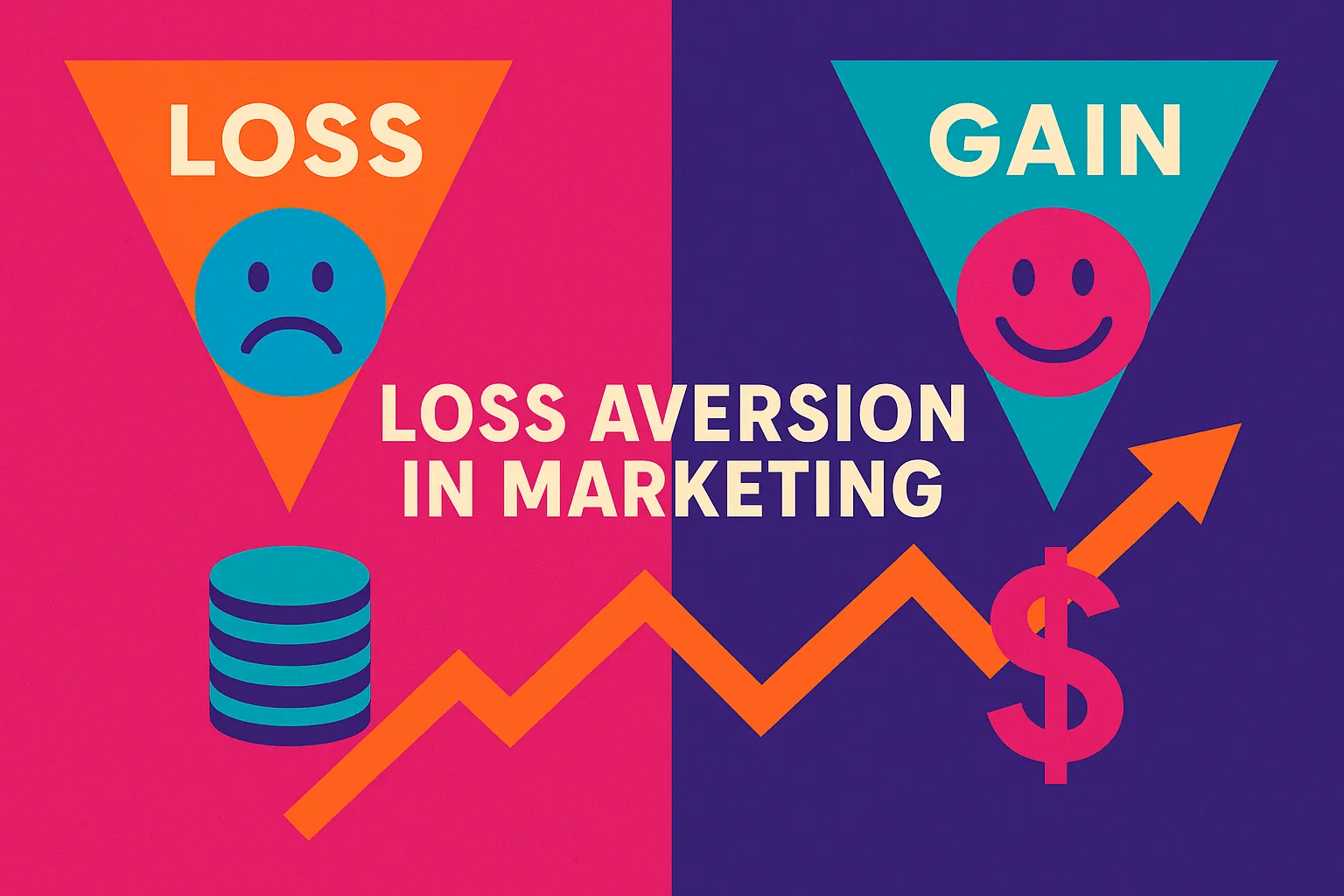What Are Technical SEO Benefits?
Technical SEO refers to optimizing your website’s back-end infrastructure so search engines can crawl, index, and rank it efficiently. While content and backlinks are essential, they can’t do much if your site is slow, broken, or confusing to bots.
As the CEO of Vibe Branding, I’ve spent over 10 years watching companies rise and fall in search rankings—and the difference often comes down to the invisible work of technical SEO. It’s not flashy, but it’s powerful.
TL;DR – What You’ll Learn in This Guide on Technical SEO Benefits
- Technical SEO is the foundation of your website’s ability to rank, load fast, and stay secure.
- It improves crawlability, indexing, and site structure so Google can understand your site.
- A fast, mobile-friendly, and structured site means users stay longer and convert more.
- Schema markup, HTTPS, XML sitemaps, and internal links all contribute to long-term growth.
- At Vibe Branding, we’ve seen consistent wins for clients who prioritize technical SEO.
Why Technical SEO Is More Than Just “Fixing Code”
When I first started in digital marketing, I made the same mistake a lot of business owners do—I focused only on keywords and blogs. But after years of building hundreds of websites, I can tell you: technical SEO is the difference between a good website and a high-performing one.
At its core, technical SEO ensures your site is:
- Fast to load
- Easy to crawl
- Mobile-optimized
- Secure (HTTPS)
- Free of duplicate or broken content
Without this solid foundation, even your best content might never see the light of day in search results

The Key Technical SEO Benefits You Can’t Afford to Ignore
Every business wants more organic traffic, but few realize how much of it is blocked by technical issues. Here’s what technical SEO really delivers:
- Improved Crawlability and Indexing
Google uses bots to read your site. If your pages aren’t easily crawlable due to broken links or blocked scripts, they won’t get indexed—period. - Faster Page Speed
Page load time directly impacts your bounce rate. We’ve improved load times by 50% for clients just by optimizing images and eliminating render-blocking resources. - Mobile Friendliness
Google now uses mobile-first indexing. If your site isn’t responsive, you’re already behind. - Structured Data and Schema Markup
These help search engines better understand your content—and can lead to rich snippets, which increase click-through rates. - Secure, HTTPS Protocol
A secure site is a ranking factor and builds trust. Google even flags non-HTTPS sites as “Not Secure.”
When we applied these principles to a local ecommerce client, they jumped from page 3 to page 1 within 90 days—without publishing a single new blog.
The Power of Page Speed and Core Web Vitals
This is where things get real. Google’s Core Web Vitals are speed-based metrics that impact your rankings. As an agency, we’ve seen dramatic ranking shifts after optimizing the following:
- Largest Contentful Paint (LCP)
- First Input Delay (FID)
- Cumulative Layout Shift (CLS)
One of our clients saw their LCP drop from 4.1s to 1.8s, and in just two weeks, impressions in Google Search Console shot up 63%. These aren’t vanity metrics. They translate to real traffic and real sales.
Why Mobile-Friendliness Is a Ranking Factor
More than half of all traffic comes from mobile devices. If your buttons are too small or your layout breaks on a phone, people bounce.
Technical SEO ensures your site is responsive—no zooming in or pinching to navigate. At Vibe Branding, we use responsive testing tools and mobile emulators to make sure everything works across all devices.
Remember, Google crawls your mobile version first. If that version’s broken, your rankings tank—no matter how beautiful your desktop site looks.

Clean Site Structure = Better Indexing and User Flow
Imagine walking into a store with no signs, weird pathways, and duplicate aisles. That’s how a poorly structured site feels—to both users and Google.
We start every project by mapping the site’s hierarchy. Pages flow from homepage → categories → subcategories → individual content.
This allows both bots and people to find what they’re looking for quickly. Here’s what we always include:
- A clear internal linking strategy
- Breadcrumb navigation
- Descriptive, SEO-friendly URLs
- Logical folder structure
- An optimized XML sitemap submitted to Google
The SEO Value of HTTPS and Site Security
You wouldn’t leave your store unlocked, so why let your site be vulnerable? Google now prioritizes HTTPS as a ranking signal.
We always install SSL certificates and scan for mixed content errors. But beyond SEO, this builds user trust.
That little padlock icon next to your URL? It matters. A secure site also protects user data, which is critical if you’re collecting emails, credit cards, or any personal information.
How Schema Markup Boosts Click-Through Rates
Want more attention in Google results? Schema markup is your best friend.
By adding structured data, we help Google understand and highlight your content. Think review stars, FAQ drop-downs, event dates—all things that make your listing pop.
We’ve used schema to triple one client’s click-through rate just by getting them those extra visual features in search.
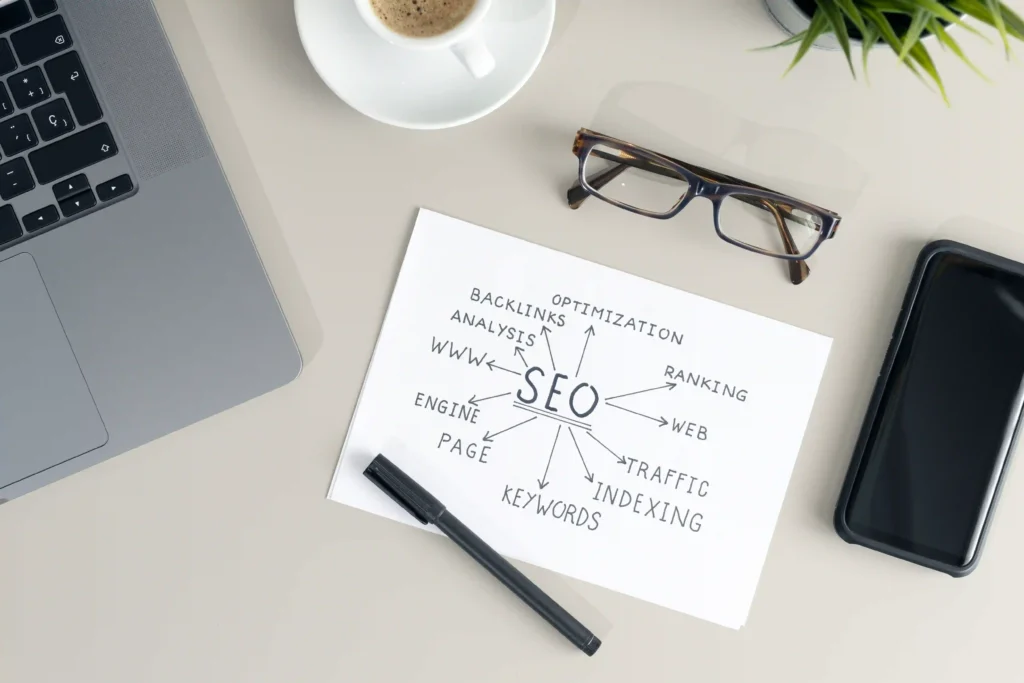
Technical SEO Tools That We Use at Vibe Branding
Tools are only as good as the strategy behind them. But here’s what we actually use every day:
- Google Search Console – for crawling, indexing, and performance tracking
- Screaming Frog – our go-to site crawler for identifying broken links and duplicate content
- PageSpeed Insights – for Core Web Vitals and speed issues
- SEMrush Site Audit – for weekly health checks
- Ahrefs – for backlink audits and technical link issues
- Google’s Mobile-Friendly Test – to ensure responsiveness is on point
- Schema.org Validator – for checking our structured data markup
We run all client sites through this toolkit at onboarding—and again every quarter.
Real-World Wins from Technical SEO Fixes
Here are a few examples from our experience that show how powerful these fixes can be:
- Law Firm Client: Fixed broken canonical tags and sitemap errors → +112% organic traffic in 60 days
- Local Retailer: Compressed images and implemented lazy loading → PageSpeed score went from 43 to 91
- SaaS Startup: Implemented schema and fixed crawl budget leaks → Jumped from 800 to 2,300 indexed pages
- Food Blog: Removed duplicate content and cleaned URL structure → Bounce rate dropped from 78% to 51%
These are everyday outcomes when technical SEO is done right.
How Often Should You Audit Technical SEO?
This is one of the most common questions I get. The truth is, technical SEO is never a one-and-done task.
Your site evolves. Pages are added, URLs change, tools update, and Google tweaks its algorithms.
That’s why we recommend a full technical audit at least once per quarter. At Vibe Branding, we run automated scans monthly and perform manual checks every 90 days.
We’ve caught critical issues early—like plugins that quietly deactivated schema, broken redirects after CMS updates, and hosting changes that slowed down image delivery.
Even if your site is small, don’t let issues pile up. Use tools like Screaming Frog, Google Search Console, and PageSpeed Insights as your monthly pulse check.

Is Technical SEO a One-Time Fix or an Ongoing Strategy?
This one’s easy: it’s ongoing. Just like your car needs regular oil changes even after a full tune-up, your website needs constant care.
Technical SEO evolves as technology and user behavior change. A few years ago, Core Web Vitals didn’t even exist.
Today, they influence how Google ranks you. At Vibe Branding, we build technical SEO into all our retainers because we know it delivers long-term value.
Even if you do a big overhaul today, regular audits and updates are what keep you competitive.
Measuring the ROI of Technical SEO
If you’re running a business, you want numbers. And trust me, technical SEO benefits show up clearly in your metrics.
Faster page speed can lower bounce rates. Better crawlability increases indexed pages. Structured data boosts click-through rates.
Metric | Before SEO Fix | After SEO Fix |
Page Load Time | 4.2 sec | 2.1 sec |
Bounce Rate | 72% | 49% |
Pages Indexed | 385 | 560 |
CTR from Organic Listings | 2.3% | 4.9% |
Organic Traffic Growth | — | +58% in 3 months |
Technical SEO is measurable. And it’s profitable.
Final Thoughts from 10+ Years in the Game
If there’s one thing I’ve learned from over a decade in digital marketing, it’s this: the best content and the best products mean nothing if your site isn’t technically sound.
Whether you’re just launching or trying to recover lost traffic, technical SEO is your foundation. Start with the basics: crawlability, speed, mobile usability, structure, and security.
Then build from there with schema, sitemap optimization, and ongoing audits. At Vibe Branding, we’ve made technical SEO part of every project because it’s not optional—it’s the invisible power that fuels everything else.
Because in digital marketing, technical SEO benefits are what separate the websites that work from the ones that win.

